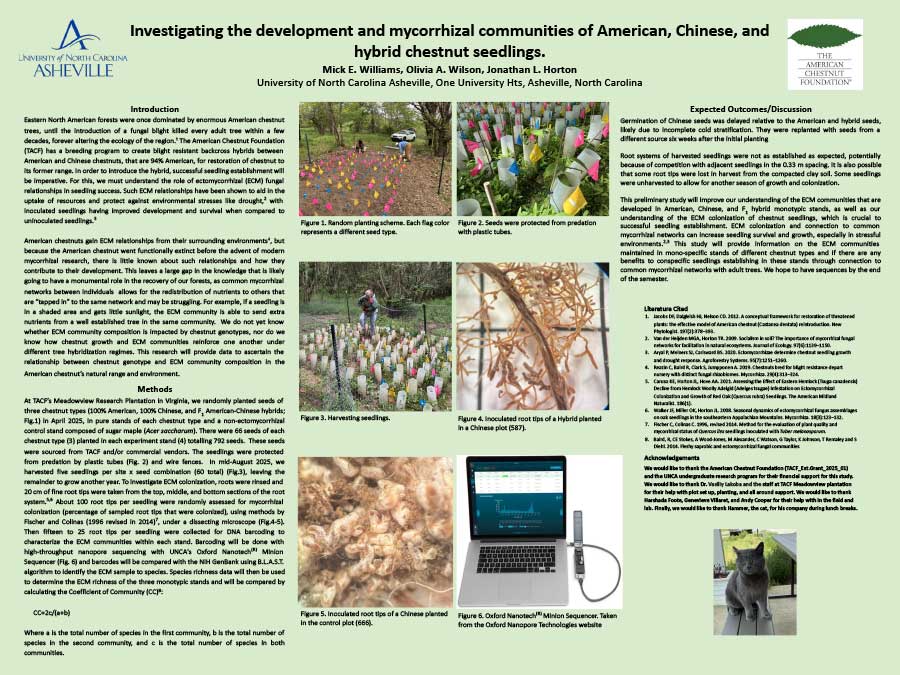2025 Poster Session
Mick E. Williams, Olivia A. Wilson, Jonathan L. Horton, 2025
Click image to view PDF.
Abstract
Investigating the development and mycorrhizal communities of American, Chinese, and hybrid chestnut seedlings.
Williams, ME; Wilson, OA; Horton, JL
University of North Carolina Asheville, One University Hts, Asheville, North Carolina
The American chestnut was once a dominant species in Eastern North American forests, until the introduction of chestnut blight led to its functional extinction. Efforts to reintroduce the species include breeding for blight-resistant hybrids, such as the 94% American backcross hybrid developed by The American Chestnut Foundation (TACF). However, successful reintroduction will be reliant on understanding the ectomycorrhizal (ECM) fungal relationships made by the species, as these are imperative for seedling establishment. This study aims to characterize the ECM communities associated with American, Chinese, and their F1 backcross chestnut hybrids, in order to bridge the gap in our understanding of how genotype affects ECM colonization and composition. At TACF’s Meadowview Research plantation seedlings of the 3 chestnut types were planted in May in pure stands of the three chestnut types and under non-ECM silver maple as a control. We harvested five seedlings per site x seed combination (60 total) from the sites in mid-August and after the roots were separated from the shoot and rinsed, roughly 20 cm of fine root length was taken from the top, middle and bottom sections of the root system. About 100 root tips per seedling were randomly assessed for mycorrhizal colonization, under a dissecting scope. Fifteen to 25 ECM root tips were collected for DNA barcoding to identify ECM taxa. ECM species richness will be analyzed with ANOVA and composition will be compared among communities using the Coefficient of Community (CC). In a complementary study, seedling growth and physiological traits will be compared among the different seed x stand combinations and will be related to ECM colonization. This research will provide critical data on ECM interactions in chestnut restoration, potentially informing future reintroduction strategies for blight-resistant hybrids.

